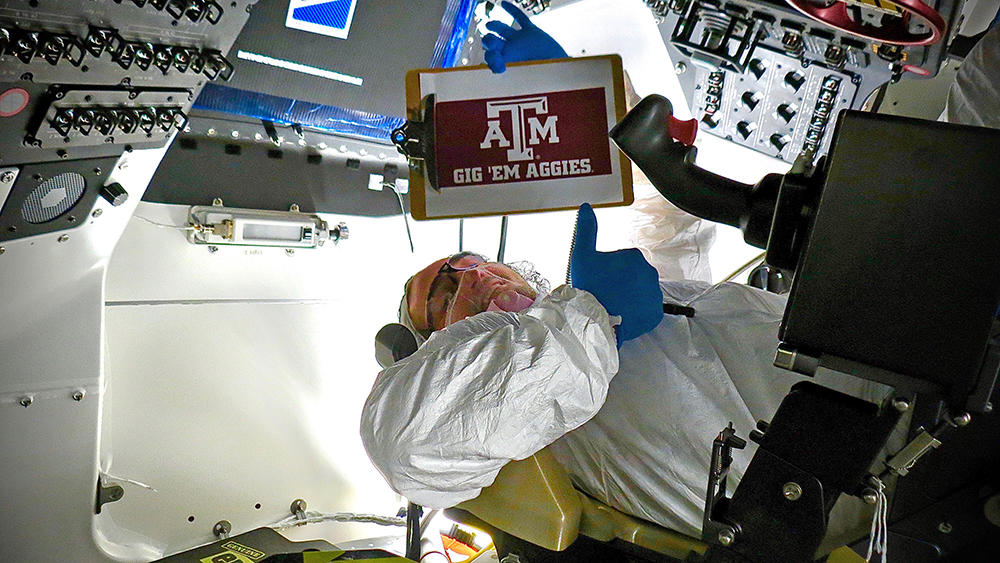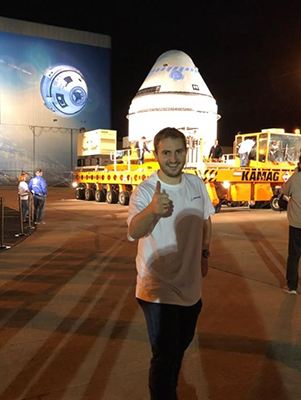
A recent Texas A&M University graduate helped oversee the production of a Boeing space capsule that made history last month as the first crew-capable capsule to make a land-based touchdown in the United States.
Mitch Carson ’17, a graduate of the J. Mike Walker ’66 Department of Mechanical Engineering, is making the most of the skills he learned while at Texas A&M.
Carson, who started with Boeing by interning as a student, now works as a shift engineer, helping oversee the production of the company’s Starliner space capsule at Kennedy Space Center in Florida.
Carson took the time to share his thoughts on several topics, including what first interested him in mechanical engineering and the historic achievement to which he contributed.
Q: What interested you in mechanical engineering?
A: Growing up, I spent a lot of time taking things apart, figuring out how they worked and putting them back together again. I played with Legos, built props for plays and even restored a 1976 Camaro. I knew that I had a knack for all things mechanical but needed more than just intuition to really build things well. With that in mind, I started seeking a career that would both employ my talents and provide financial stability to the family I hoped to have. After researching different fields, it became clear that mechanical engineering was the perfect discipline to meet these goals.
Q: How did your time in the mechanical engineering department help prepare you for your career?
A: It made me tough and gave me the grit I need to persevere through difficult situations. It also taught me how to effectively manage my time, work productively with a variety of people from diverse backgrounds, and create tools to solve mechanical problems.

Q: What opportunities were most impactful during your time as a student?
A: The mechanical engineering department put an emphasis on learning how to use Matlab and C++. I didn’t understand why at the time, but can now see how useful those skills are. Already at Boeing I’ve been able to take what I’ve learned and automate processes that other engineers have been doing manually for years. As a result, I’m able to create more robust designs and complete my work much more quickly and correctly than many of my peers.
Q: What do you do in your job now?
A: Many engineering designs look great on paper but turn out to be unviable when it comes time to build them. My job is to work with technicians to identify these issues during spacecraft construction, modify the design so that it can be built, analyze my modifications to make sure that they maintain the spacecraft’s design intent and integrity, and finally oversee the solution’s implementation. I really enjoy it; I’ve gotten to work on several satellites and for the past seven months have been helping build the Starliner space capsule.
Q: What excites you most about your work?
A: I feel like an artist. I get to take ideas as they pop into my head and then go build them. It’s really cool getting to see a picture in my head become a physical structure in front of me, especially one that gets put on top of a rocket and shot into space.
Q: How does it feel to be a part of this historic achievement?
A: It feels kind of like how you feel when you beat your record time in a race: proud, excited and exhausted.
Q: What advice do you have for current and future students?
A: First, learn to use Matlab for more than what’s instructed by your professors; it’s an invaluable tool for engineers and Texas A&M gives you a unique opportunity to learn it.
Second, do whatever you can to get an internship every year. Even if it’s not your dream job, the experience will be valuable and help you get the job you want in the future. Texas A&M does an excellent job with career fairs and giving you resources to find a job/internship; remember though, that it’s up to you to use them effectively. I also advise that you pursue job-seeking avenues outside of those offered directly by the school. You never know what might end up working out.